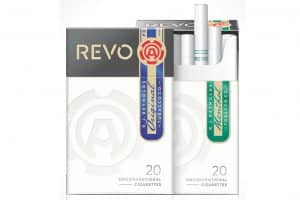
For centuries people smoked tobacco, then a few years ago e-cigarettes appeared, and now the next big thing is Heat not Burn, HnB or heated tobacco. This idea has actually been around for a while, but technology was never advanced enough for it to be a real success. Now electronics and batteries have caught up with the concept and a whole range of new devices are starting to appear.
So you’re probably wondering what, exactly, is heat not burn all about? The answer is it’s the latest alternative to smoking – so it’s a technology that could save a lot of lives.
Everyone knows how unhealthy smoking is by now. What puzzles lots of health experts is that so many people, knowing the dangers, still smoke. The point they’re missing is that most smokers enjoy it. They tell survey takers that they want to quit, and many of them really mean it, but they don’t really want to. The truth is smokers enjoy smoking. If they gave up they’d be healthier and better off, but those gains have to be set against the loss of something they like. For many it’s just not worth it.
This is why electronic cigarettes have become so popular; they give smokers most of the benefits of giving up without actually having to lose anything. Vapers usually say they switched, rather than quit. The problem is electronic cigarettes aren’t for everyone. The latest models can put out enough vapour to replace the smoke of a cigarette, but there’s just no way to reproduce the taste of real tobacco. Even liquids flavoured with natural extracts don’t quite do it, because of the slightly sweet taste of the vegetable glycerine base.
Smoke – not tobacco – is the problem
Heat not burn gets around this disadvantage. Instead of vaporising a liquid, like e-cigarettes do, it uses actual tobacco – but instead of burning it, it uses heat to vaporise the nicotine and flavour elements. If it’s done properly the experience is as close to smoking as you can get without actually setting fire to tobacco, and of course setting fire to stuff is what you want to avoid.
Tobacco has such a bad reputation that it’s easy to start thinking of it as a sort of vegetable plutonium, but on its own it’s actually fine. There are some nasty chemicals in it, of course, but you can say the same about lettuce or blueberries. It’s not the tobacco that makes cigarette smoke so dangerous; it’s the smoke. When you burn anything it creates thousands of new chemicals; some of them cause cancer and many more are poisonous. In fact probably the worst thing in tobacco smoke is carbon monoxide, which hardens arteries and puts a lot of stress on your heart and lungs.
If you analyse a handful of fresh tobacco you won’t find any carbon monoxide in it. That’s because it’s created when the tobacco burns. Some people think herbal cigarettes are safer than tobacco ones because they don’t contain nicotine, but they’re as wrong as it gets. Herbal cigarettes are just as dangerous as tobacco because the smoke is comes from burned shredded leaves.
So the idea behind heat not burn is that by heating the tobacco enough to release the flavour and nicotine, but not enough to burn it, you can create a vapour that tastes very close to tobacco smoke without all the hazardous chemicals. This heated tobacco technology is similar to an e-cigarette; you have a hand-held device with a power source and heating unit, and that heats the tobacco inside. The tobacco itself usually comes pre-packed in sticks or cartridges, but there are options that can use loose tobacco.
That’s part of the appeal of heat not burn – the basic technology is flexible enough to do a lot more than heat tobacco. Many devices can be used for wax or solid herbs as well as tobacco. It all depends what you’re looking for; if you just want a no-hassle replacement for cigarettes something that uses pre-packaged tobacco is probably going to be ideal, because it’s easy to use. If you have other things you can legally vape a loose-fill device could suit you better.
Choose your technology
Looking at the actual mechanics of how the devices work, that can vary quite a bit. Some are very like electronic cigarettes, using an internal battery and power circuit to heat a coil that vaporises the tobacco. Others are butane powered – they have a gas tank in the handle you can refill just like a lighter or blowtorch, and a gas jet heats a baseplate under the tobacco. Butane will probably give you a longer life; batteries will make life (slightly) easier if you travel a lot.
There’s more variety in tobacco systems. Philip Morris are trialling their HeatStick system right now; this uses a battery-powered vape pen that can be loaded with wrapped tobacco sticks that look pretty much like a short cigarette. A coil heats the tobacco to 350°C, just below what’s needed to ignite it but plenty to vaporise the flavour and nicotine you’re looking for.
(UPDATE: This article was written in December 2015 when heat not burn was very much in its infancy, Philip Morris have now started to roll out their HeatStick system, now branded as iQOS and we are selling them right here on this website.)
San Francisco-based Ploom have a butane-powered device that you feed with foil “pods” that look like short, fat pistol cartridges. The gas flame heats these, vaporising their contents so you can inhale them through the mouthpiece. Ploom Pods are available in a few different flavours that include tobacco and herbal options.
RJ Reynolds are trying a different approach. Their Revo looks like a heavy duty cigarette with a foil wrapper. That’s exactly what it is. It’s basically a metal-cased cigarette with a filter at one end and a carbon tip at the other. When you light it the heat from the glowing carbon does the vaporising thing and releases the unburnt aroma from the tobacco filling. Revo is theoretically as close to smoking as you can get without smoking – but an almost identical RJR product, the Eclipse, flopped badly a few years ago.
The big selling point right now for heated tobacco is health; no real research into safety has been done yet but it’s pretty much certain that vaporising tobacco has to be a lot safer than burning it. There are other advantages too, though. Heated tobacco produces vapour, not smoke, so your hair and clothes won’t end up loaded with that stale tobacco ash smell. Talking about ash, they don’t produce that either; when a pod, stick or Revo is finished you just let it cool down then throw it in the bin. Ashtrays are a thing of the past. There should be little or no secondhand risk, too.
Heat not burn is a technology that’s been tried before, and never really took off, but as the rocket rise of vaping shows, smokers are a lot more open-minded now. With the new devices coming on the market, and the widespread acceptance of vapour as a real alternative to smoke, it looks like heat and burn’s time has come.











[…] content of real tobacco, but taking away the toxic substances created by burning it, the aim is to keep the pleasure of smoking but eliminate most of the risk. The tobacco companies believe the popularity of e-cigarettes have […]
I stopped smoking over two years ago by using E-cigs. It was the easiest way of quitting. I’d ever encountered.
[…] through market trials and the most promising of these is Philip Morris’s iQOS system. We’ve looked at this before, but because it’s only on sale in a few countries it’s been surprisingly difficult to […]